A/C Repair & Installation Services
Residential A/C Check-up and Maintenance
Get Your A/C Questions Answered
Save on Energy Bills
Give Us A Call (707) 539-4533
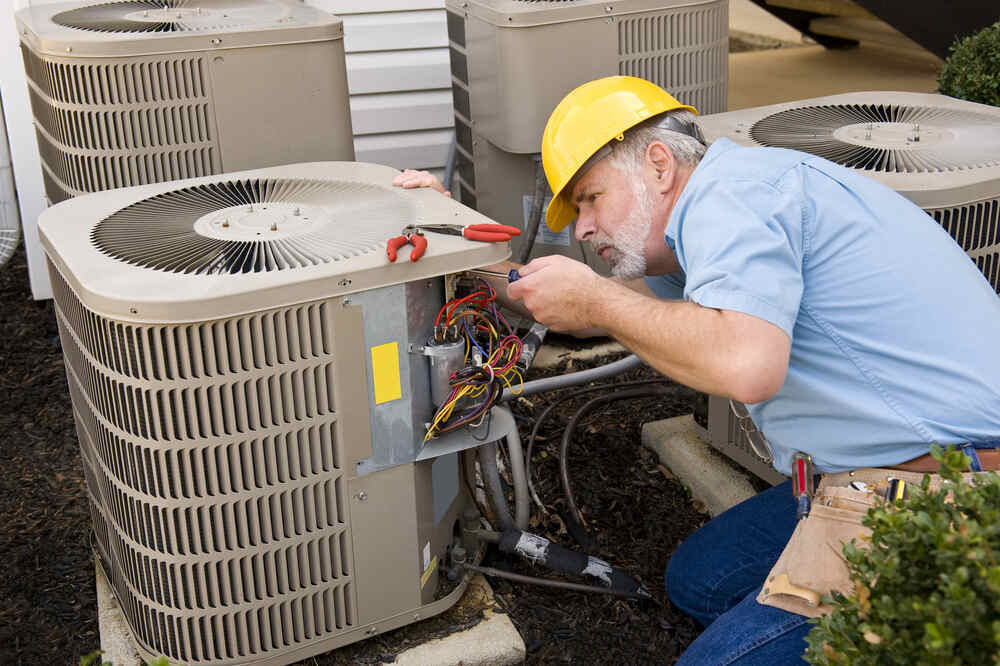
Experienced
We are committed to providing the best installations in the industry. Keeping your air conditioner well maintained is essential to getting the maximum life out of the unit. Our Residential Air Conditioning technicians are qualified to service all makes and models of cooling systems.
Available
24/7 – our emergency service will take your call anytime. Our staff of factory—trained technicians have the expertise to install and repair residential air conditioning equipment of any make or model, 24 hours a day, 7 days a week.
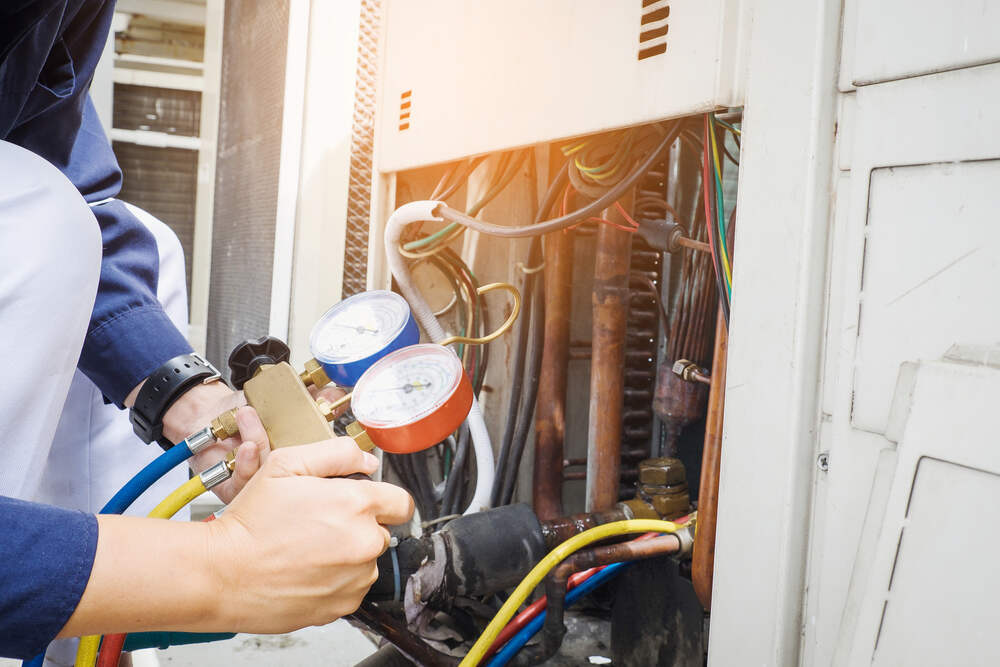
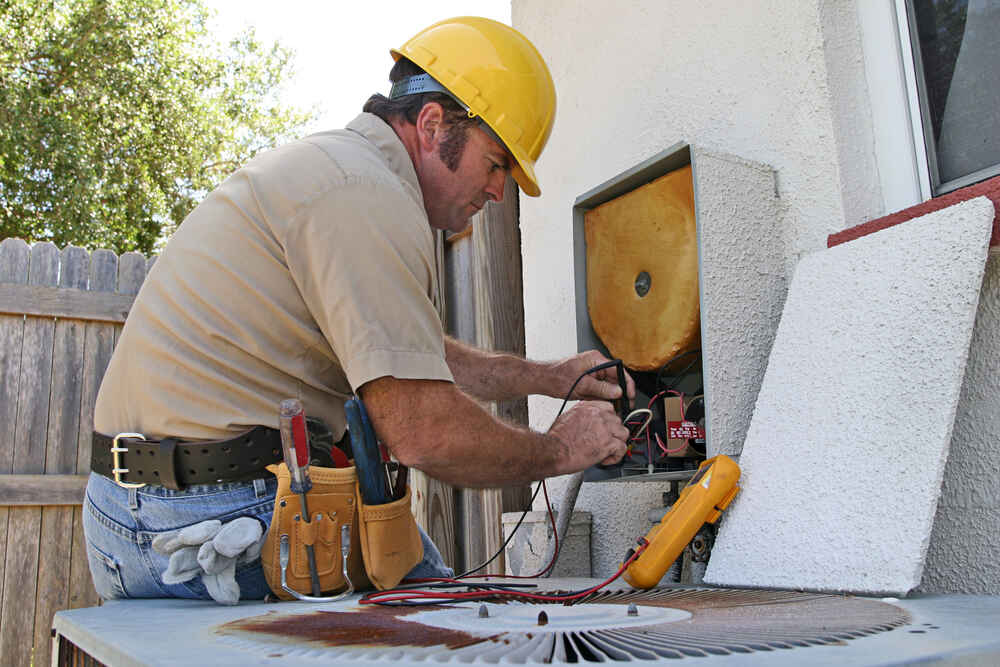
Reliable
We are a family-owned and managed company, serving residential and business customers in the Santa Rosa, Napa and Sonoma areas. Owner Bryan Simning grew up in the area and understands the special cooling needs of Northern California home and business owners.
Locations We Serve
Sonoma County
- Cotati
- Healdsburg
- Petaluma
- Rohnert Park
- Santa Rosa
- Sebastopol
- Sonoma
- Windsor
Napa County
- American Canyon
- Calistoga
- Napa
- Oakville
- Rutherford
- St Helena
- Union
- Yountville
Marin County
- Novato
- San Rafael
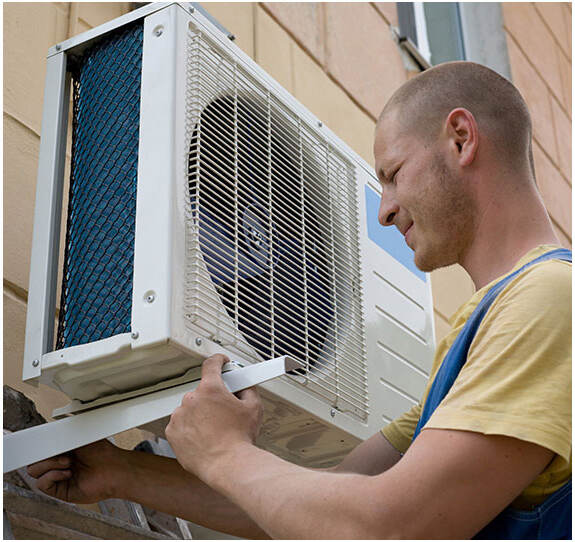
Everything to Know About Air Conditioning
There’s no technological advancement we love more than the air conditioner. With ACS in our homes, our cars, our workplaces and nearly everywhere we go in public, it’s safe to say we depend heavily on them to remain comfortable no matter the weather outside.
How Does It All Work?
Understanding your air conditioner not only makes it easier to maintain, but it can simplify the process of recognizing when a problem is developing.
So, What Do You Need to Know?
Everything You Need to Know About Air Conditioning
Whether in our homes, cars, or wherever we visit, we all rely on air conditioning to keep us cool and comfortable year-round. However, relatively few AC owners actually know how they work. While we’re more than happy to lend our expertise to any HVAC-related issues you might have, understanding your air conditioner can help you recognize when a problem is developing, as well as make maintenance simpler and easier. Here’s what you need to know to become an AC expert:
Table Of Contents
What Is Air Conditioning?
At its most basic, air conditioning is simply a way to alter the temperature of the ambient air within a space. Air conditioners don’t create cold air to blow into your home, though In fact, it’s just the opposite; outside air doesn’t enter your home through the AC system.
Even when air already feels cool, there is still heat present — air conditioners work by extracting this heat and allowing it to escape outdoors.
Instead, the physical principles at work remove heat from the air, chilling it in the process.
Throughout history, this has been achieved through a variety of means, discussed below. Today, it typically refers to various forms of a “split or central system,” where some components are located indoors while others sit outdoors. This separation is necessary for the proper operation of the refrigerant cycle.
Let’s start with the most basic question: What is air conditioning? In simple terms, an air conditioner works to alter the temperature of a space by removing heat from the air inside. Even though it seems like your AC is cooling the house by blowing fresh cool air into it, that’s actually not the case. Rather, an air conditioner uses principles of energy transfer to extract heat from the air that’s already present in your home. That heat energy is transferred outside through exhaust vents while the newly cooled air is returned to your house, car, or wherever else you have an AC set up.
We’ll talk a little more about how modern AC units achieve that heat transfer, but the important thing to remember is that they can never create cold air and blow it into your home. Rather, they cycle the same air over and over, constantly drawing out the heat to continually cool down the space. Today’s air conditioners are marvels of modern engineering that use simple scientific concepts like condensation and evaporation to transfer heat, which we’ll go over in a bit.
History Of Residential Air Conditioning
Though modern air conditioning only began its journey in the mid-19th century, the reality is humans have sought ways to make the air around them cooler and more comfortable for thousands of years.
For example, it’s easy to call many forms of evaporative cooling found in history the forerunners of today’s AC.
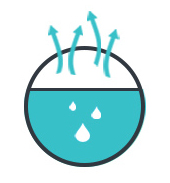
For most of human history, we used passive cooling techniques to lower the temperature in our homes. Passive cooling works in two different ways: heat gain prevention, which involves using insulation to keep heat from entering the building, and natural cooling designs that allow heat to escape the home while keeping the cold air inside. These techniques worked fairly well for thousands of years and are coming back in style as a method of fighting climate change. However, they’re not nearly as effective as active cooling and air conditioning, which date back to the 18th and 19th centuries.
Did you know that Benjamin Franklin was not only a founding father of the United States but also of air conditioning technology? In 1758, Franklin and a Cambridge professor of chemistry named John Hadley conducted an experiment that established one of the foundations of modern air conditioners: evaporative cooling. First, Franklin and Hadley took an ordinary mercury thermometer and dipped the bulb in alcohol. Then, they used a bellows to quickly evaporate the alcohol from the thermometer. The result was an enormous transfer of heat away from the bulb of the thermometer. Although the ambient temperature of the room was about 65 degrees Fahrenheit, they were able to lower the temperature of the thermometer to about 7 degrees. Franklin would conclude that “from this experiment, one may see the possibility of freezing a man to death on a warm summer’s day,” although we’ve found a much more positive use for the principle he discovered.
In 1820, the English inventor Michael Faraday discovered that he could chill ambient air by compressing, liquefying, and finally evaporating ammonia. His experiments formed the basis for the refrigerant used in modern air conditioners. This technology was soon put to use as a way to make ice and keep food from spoiling while it was being shipped.
Finally, in 1901, an inventor named Willis H. Carrier created the first mechanical air conditioner using the compression and evaporation technology pioneered by Faraday. The AC manufacturing company he created, Carrier Engineering, still exists today as Carrier Global. The US embraced residential air conditioning wholeheartedly over the next few decades, and today it’s hard to find a house or apartment that doesn’t have at least some kind of AC.
What Is Evaporative Cooling?

Numerous inventors and scientists, including Michael Faraday discovered that compressing a liquid and then allowing it to evaporate could achieve a cooling effect. Early compressor systems were difficult to power, inefficient, and mostly put to the purpose of making ice. However, it laid important groundwork.
Michael Faraday
Early Compressor System
Learn more
That groundwork was built upon by Willis Carrier in the early 20th century who pioneered electrical cooling – the process we know today. These developments ultimately led to the first split-system designs suitable for homes, and the development of evermore efficient refrigerant chemicals to undergo the compression and expansion process. Ultimately, ductwork became a standard part of many homes, and central air conditioners took their place in our daily lives.
Willis Carrier
Modern Air Conditioner
Learn more
How Residential Cooling Systems Work
The evaporative process, described above, is relatively easy to understand. In this day and age, nearly all air conditioners, from central air to window-mounted units use the compression and evaporation of a refrigerant to cool the air inside your home.
The process works like this.
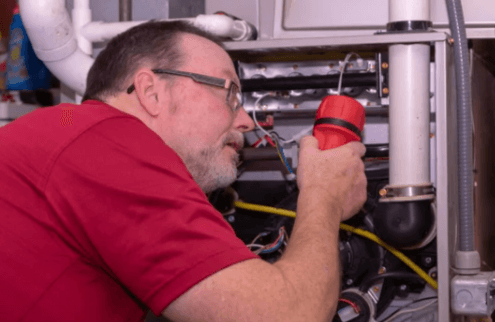
- Your thermostat detects, through mechanical or digital means, that the indoor air temperature is higher than your preferred temperature setting.
- The thermostat sends a command to the AC to switch on its compressor and to power the internal blower fans.
- The compressor forces refrigerant into the system at very high pressure so that it remains a liquid.
- Refrigerant enters your home and expands into an evaporating coil: here, a strong fan blows air pulled from the home’s intake over the condenser.
- Within the coil, the refrigerant evaporates to its gaseous state, pulling heat energy out of the air in the process.
- The now-cool air re-circulates into the home due to the blower fan.
- The refrigerant returns outside, where it enters a condenser to return it to a liquid before being re-compressed and sent back through the system.
This process is how almost all modern cooling systems work. Ductless systems work on a room by room basis, but still require an external unit for moving refrigerant.
Today’s air conditioners work using the same principles discovered by Franklin, Hadley, and Faraday all those years ago. These days, however, it all starts with the thermostat. Any air conditioner, even the smallest window units, is connected to a sensor that constantly tests the temperature of the air inside. When the thermostat detects that the temperature is warmer than your preferred settings, it sends a signal to the air conditioner.
The signal from the thermostat turns on two different mechanical parts inside the AC – the compressor, and the blower fan. The compressor pushes a working fluid called a refrigerant through a line, using pressure to force it into a liquid state. The liquid refrigerant then passes into a metal coil called the evaporator, which reduces the pressure. The lower pressure allows the liquid refrigerant to evaporate into a gaseous state, which also lowers the temperature of the coil – just like the thermometer bulb in Franklin and Hadley’s experiment. The blower fan pushes all the newly-cooled air out into the ducts or straight into the room, lowering the temperature in your house. Finally, the gaseous refrigerant passes through another line into the condenser coil, which re-compresses it back into a liquid and starts the cycle over again.
Most modern-day residential air conditioners are split-system ACs, which means the parts mentioned in the previous paragraph are split into two separate units. The outside unit holds the condenser coil and the compressor, and the inside unit holds the evaporator coil and the blower fan. Two refrigerant lines pass through the wall of your house and connect the two units. While it’s not important to know every little detail of how your AC works, knowing the general function of the four main parts – compressor, condenser coil, evaporator coil, and blower fan – can go a long way to help you diagnose potential problems when they arise. It’ll also come in handy when you’re speaking to an HVAC technician since you’ll have the knowledge and vocabulary to explain what the concern is. Just by reading this one section, you already know more than most people!
Energy Transfer: What is EER?
The Ener Efficient Ratio (EER) is the original way for determining the efficiency of an air conditioner unit, but it uses fixed values. Its formula assumes the outside temperature is 95F, the desired indoor temperature is 80F, and 50% humidity.
This formula yields a number between 1 and 20+; the lower the number, the less efficient the unit is, and the more energy it wastes.
EER vs SEER
The efficiency you can expect from your A/C at the peak cooling time.
The average of the highs and lows of a home’s cooling pattern.
A better measurement for homes in unusually hot or cold climates.
A better measurement for homes in moderate climates.
The Seasonal Energy Efficient Ratio (SEER) does not use constant temperatures in its computations. Instead, it tries to determine the average efficiency over an entire season, like the summer. SEERs vary more than EERs, but both tell you something important about your potential energy usage.
Even with today’s modern AC technology, air conditioners are still some of the more significant power drains in any house. One of the most common concerns we hear from homeowners is the energy efficiency of their HVAC system, especially with climate change on everyone’s minds. In recent years, air conditioning manufacturers have been putting a lot of effort into more eco-friendly solutions, and so today’s AC units are more efficient than ever before.
The efficiency of an air conditioner is recorded in a measurement called EER, or Energy Efficiency Ratio. EER uses a formula that measures the efficiency of an AC when the outdoor temperature is 95 degrees Fahrenheit, the indoor temperature is 80 degrees, and the humidity is 50%. The result is a number between 1 and 20, with higher values representing less wasted energy. Since EER measures the efficiency of your air conditioner during peak cooling conditions, it’s helpful for homeowners living in unique climates that are especially hot or cold. However, if you live in a more moderate climate, EER won’t represent the actual temperatures you experience during the summer.
That’s where SEER comes in. SEER, or Seasonal Energy Efficiency Ratio, measures the efficiency of an air conditioner averaged out over the entire summer. This makes it a much more useful rating for the majority of homeowners in the US, so you’re more likely to see the SEER rating on the AC packaging than the EER these days.
Residential Air Conditioner Maintenance
An air conditioner’s filters, coils, and fins require regular maintenance for the unit to function effectively and efficiently throughout its years of service. Neglecting necessary maintenance ensures a steady decline in air conditioning performance while energy use steadily increases. Check out our Energy Saver 101 Infographic: Home Cooling for more was to help improve your comfort and the efficiency of our air conditioner.
What Else Should You Know About AC Maintenance?
Air Conditioner Filters
The most important maintenance task that will ensure the efficiency of your air conditioner is to routinely replace or clean its filters. Clogged, dirty filters block normal airflow and reduce a system’s efficiency significantly. With normal airflow obstructed, air that bypasses the filter may carry dirt directly into the evaporator coil and impair the coil’s heat-absorbing capacity.
Replacing a dirty, clogged filter with a clean one can lower your air conditioner’s energy consumption by 5-15%.
Where are Filters Located?
For central air conditioners, filters are generally located somewhere along the return duct’s length. Common filter locations are in walls, ceilings, furnaces, or in the air conditioner itself.
Room air conditioners have a filter mounted in the grill that faces into the room. Some types of filters are reusable: others must be replaced. They are available in a variety of types and efficiencies.
Clean or replace your air conditioning system’s filter or filters every month or two during the cooling season. Filters may need more frequent attention if the air conditioner is in constant use, is subjected to dusty conditions, or you have fur-bearing pets in the house.
Air Conditioner Coils
The air conditioner’s evaporator coil and condenser coil collect dirt over their months and years of service. A clean filter prevents the evaporator coil from soiling quickly. In time, however, the evaporator coil will still collect dirt. This dirt reduces airflow and insulates the coil, reducing its ability to absorb heat. To avoid this problem, check your evaporator coil every year and clean it as necessary.
Outdoor condenser coils can also become very dirty if the outdoor environment is dusty or if there is foliage nearby. You can easily see the condenser coil and notice if dirt is collecting on its fins. You should minimize dirt and debris near the condenser unit. Your dryer vents, falling leaves, and lawn mower are all potential sources of dirt and debris. Cleaning the area around the coil, removing any debris, and trimming foliage back at least 2 feet (0.6 meters) allow for adequate airflow around the condenser.
Coil Fins
The aluminum fins on evaporator and condenser coils are easily bent and can block airflow through the coil. Air conditioning wholesalers sell a tool called a “fin comb” that will comb these fins back into nearly original condition.
Condensate Drains
Occasionally pass a stiff wire through the unit’s drain channels. Clogged drain channels prevent a unit fronn reducing humidity, and the resulting excess moisture may discolor walls or carpet.
Window Seals for Room Air Conditioners
At the start of each cooling season, inspect the seal between the air conditioner and the window frame to ensure it makes contact with the unit’s metal case. Moisture can damage this seal, allowing cool air to escape from your house.
Preparing for Winter
In the winter, either cover your room air conditioner or remove and store it. Covering the outdoor unit of a central air conditioner will protect the unit from winter weather and debris.
What kinds of services will a professional technican provide?
- Check and tightening connections where necessary
- Look for any signs of damage or developing breakdowns
- Test for the proper level of refrigerant and adding more if necessary
- Drain condensate pans
- Verify adequate airflow and good operational status of all components

If properly taken care of, an air conditioner can last for up to 15 or 20 years before finally dying. However, that can only happen if you keep up with regular maintenance for your unit. That includes yearly service appointments with an HVAC company like Valley Comfort, but there are also plenty of things you can do on your own to keep your AC running smoothly.
The single most important maintenance task you can handle yourself is swapping or washing the air filter. Every air conditioner has a filter placed between the blower fan and the entrance to the vents which removes dust, pet hair, and other contaminants from the air in your home. This allows the AC to clean your air while it cools it, but the filter can quickly become clogged and block airflow through the whole system. When you purchase a filter, the packaging will have a maintenance schedule for you to follow, and sticking with it can reduce the energy usage of your AC by up to 15%.
The coils will also collect dirt and dust through the summer, which can reduce the efficiency of your AC. An HVAC technician will clean the coils during your regular service appointments, but if you notice a spike in your power bills, it might be worth checking on the coils. However, you should pick up a special tool called a fin comb to clean the coils without bending or damaging the fragile fins.
If moisture is building up or dripping from the unit, you could have a clogged drain line. You can fix this pretty easily by running a wire brush through the line and removing whatever is blocking the drainage.
During your regular service appointments, an HVAC technician will clean every part of your air conditioner, check all the lines, swap the filter, check all the connections and the wiring, and refill the refrigerant. For more information on the services we provide, just give us a call at (707) 539-4533 or contact us through our website.
Residential Air Conditioning: Humidity Control
Did you know that air conditioners don’t just cool the air, but they also dehumidify it? In fact, Carrier’s original invention was focused more on controlling the humidity within a space than on cooling the air. Humidity reduction is a pleasant byproduct of the electrical evaporation cooling process.
How Does it All Work?
- As air passes over the condenser, the coil itself sucks the moisture right out of the air.
- As the condensing coil reduces humidity, the water must go somewhere – so it collects on the coils.
- The water drips or trickles into a safe space where the water can flow outside of the home.
The result is drier air that helps to bring down the overall humidity within a space. Central air conditioners can achieve this result much more easily than ductless systems since they circulate a greater volume of air. However, very high humidity can tax some systems.
A very humid environment can lead to an overflow of the drain pain, leading to reduced efficiency or even a shutoff. Likewise, a temperature set too low can cause this moisture to freeze. It’s a careful balancing act!
Not only do air conditioners control the temperature in your home, but they also act as dehumidifiers as well. This is partially because lowering the temperature of the air will always reduce the humidity as well. When the air is warm, the molecules that make it up will move around rapidly, bouncing off one another and bumping into the water molecules suspended in the air. This prevents them from collecting together and creating droplets, keeping them vaporized in the air. However, when the air cools, the air molecules slow down and allow the water molecules to cluster together and create droplets that fall out of the air.
Air conditioners also lower the humidity more directly with the evaporator coil in the inside unit. Because the coil is kept very cold, the moisture in the air passing over it will reach a dew point and condense on the metal fins of the coil. The air returns to your home without the moisture, and the droplets fall down off the coil and collect in the drain pan underneath. The result is much drier and more comfortable air in your home, while the excess moisture flows through the drain line outside.
If the air is extra humid in your home, it can cause the drain pan to overflow and stop the air conditioner from running correctly or even force it to shut itself off. If you notice that the AC sometimes shuts off prematurely when the weather is especially humid, take a look at the drain pan. You might need to pick up a dedicated dehumidifier if you live in a climate with a lot of moisture in the air, otherwise, the humidity can mess with the air conditioner.
Health Factors

Air conditioners regularly circulate the same air inside your home, impacting your health. lt helps to be aware of some of the potential ways AC can affect your health.
These include:
- Poor air quality due to particles or smoke in the air which can affect your lungs. Your AC filter helps to trap some of these, but it isn’t perfect. Eventually, dust and particle build-up in your ductwork can carry through your filter. Regular cleaning can prevent that.
- Any occurrence of mold within ductwork can pose a health hazard.
- Airborne infectious diseases, like the flu, can circulate more easily.
- Rapid reductions in humidity may be uncomfortable to some.
- Verifying adequate airflow and good operational status of all components.
Since air conditioners constantly cycle the same air from your house, they can affect the air quality and create potential health effects. For the most part, these effects will be positive. The presence of the air filter means that air conditioners actually clean the air as they cool it, capturing the dust and other contaminants from your house. In fact, many businesses are taking advantage of this by installing extra fine HEPA filters in their air conditioning systems and using them to filter viruses like Covid-19 out of the air. However, most residential HVAC systems aren’t powerful enough for those filters and are mostly able to keep larger particles like pet hair and dandruff out of the air.
Despite the filter, an air conditioner that hasn’t been properly cleaned and maintained can have some negative effects on your health. If your air filter is allowed to collect too much dust and other contaminants, they can start getting through into the air in more concentrated amounts. You can prevent this by cleaning or replacing your filter regularly.
If you have a central air system, you also have to keep your ducts clean as well. Dust and dirt caught up in the ducts can make it out through the vents into your home, but the main health effects can come if you have any mold in your vents. Even a few spores of mold can take hold in your ducts and grow into larger patches pretty quickly. If mold spores make it into the air in your house, they can have some negative health effects like a runny nose, irritation in your eyes and throat, headaches, and even nausea. If you notice these symptoms, especially if they’re worse when the AC is on, then it might be a good idea to get your ducts cleaned. Either way, you should have them cleaned professionally every few years.
What Is The Best Setting For Your AC Thermostat?
Choosing a “best” setting is ultimately an arbitrary matter of preference, and no answer will work for every individual.
Consider these factors when determining your thermostat temperature:
- The Humidity Percentages
There’s lots of truth in the old saying, “It’s not the heat, but the humidity.” When it’s hot, it’s the relative humidity making people really feel uncomfortable because your body’s sweat glands don’t work as efficiently as they can.
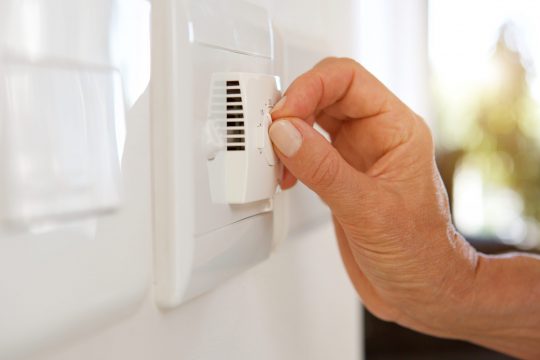
Sweat works to help maintain body temperature by evaporating from your body and carrying away some of your body heat (called “latent heat“). In fact, in order to regulate body temperature, human skin sweats automatically at 98.6 Fahrenheit (37 C).
To understand the effects of humidity better:
When the air is dry, your sweat evaporates readily and you feel comfortable. An 800F day feels like 800F when the relative humidity is 40%. However, as humidity rises, more water vapor is in the air which makes its more and more difficult for your sweat to evaporate. So when it’s steamy hot and humid, it feels much hotter and you sweat in buckets. An 800F day with 90% humidity has a “heat index” of 860F.
How can you reduce relative humidity in my home?
Fortunately, air conditioners are extremely good at this, especially if you have air sealed your home and have vapor barriers in your basement or crawlspaces. EPA recommends the “ideal” humidity level of 60% during summer and 25 to 40% in the winter. Many programmable thermostats will display the relative humidity at the push of a button. Meanwhile, personal fans and ceiling fans feel great, because they blow air across your body, and moving air is very good at evaporation. Thus, fans don’t lower the temperature of a room, but they make it feel cooler.
One common humidity problem is your air conditioner might be too big for the home. The system will run for a short time and cool the house, but will not run long enough to dehumidify. If this is the case in your home, you will need to discuss it with a contractor.
- The Numbers Game
How high can you set the thermostat on your central air and still be comfortable? Some people like it cool: others want it warm. Some people also get fixated on a setting, say 720F. Yet, they find themselves being very comfortable in a room where it is 780F without their knowing it. Like we said earlier — comfort is complicated. Also, our normal circadian rhythm fluctuates body temperatures during the day so the comfort-goal posts keep getting moved.
How do you find the right temperature?
When everyone is home, secretly set your thermostat to 810F for few hours. See how your family reacts. Over the next few days for the same period of time, drop the temperature 20F until you reach 710F. Chances are that your family will be generally comfortable between 730F and 790F when they are active.
To ideally balance comfort and cost, you should look for a setting that is as high as possible without compromising your comfort. Consider setting the thermostat to a higher level than you might typically prefer, such as 800; at this level, the AC will only run enough to keep the temperature from rising to meet the exterior ambient temperature.
Too hot? Drop it by a degree or two and wait another few hours. Evaluate how you – and your family, if applicable – feel about the temperature. You may soon find that your actual comfort threshold is higher than you’ve typically though!
The American Society of Heating, Refrigerating and Air Conditioning Engineers (ASHRAE) finds “The preferred temperature range for occupants dressed in summer clothes (0.35 to 0.6 clo) is 730 to 790F (22.50 to 260C).” Maybe you like it colder – that’s fine, too – but be aware that the more frequently you use the unit for lower temperatures, the more it will cost.

At night when you go to sleep, your core body temperature lowers and heat radiates from your extremities. A National Institute of Health study found the best sleep happens as the body reaches “thermoneutrality” when environmental temperatures are at 860F (nude and uncovered) or 60 to 660F (wearing pajamas and covered by one sheet).
This suggests the key to getting a good night’s sleep during the summer is to raise your thermostat setting to a somewhat warm setting, say 800F for example. Then use the appropriate amount of bedding and pajamas for late June to feel comfortable. You can also help yourself drift off by using a ceiling fan to gently waft a breeze down onto you. To help you wake up, you can program your thermostat to return to the waking temperature a half hour before you get up.
- Check those Savings
How much can you save by making these adjustments to your thermostat? Each degree that you are able to raise the thermostat saves you 3 to 5% on your air conditioning costs. So if normally have your thermostat pegged at 740F and you are paying $150, just raising it a mere 4 degrees to 78F could reduce your bill by $25. By adjusting your thermostat to your family’s schedule, or using a programmable thermostat, you can save even more.
Save even more energy and money with great Texas energy plans from Bounce Energy! We have a variety of rates and plans so you can find the perfect one for your home and family.
All air conditioning starts with the thermostat. Setting your desired temperature involves a tricky balance between cost and comfort that can be a little difficult to maneuver, but here are a few things you can keep in mind when you’re deciding how to set the thermostat.
As a general rule, it’s better to set your thermostat a little bit too high than a little bit too low. You might be surprised at how easily your body can adapt to different temperatures, so you might be able to set your thermostat higher than you’d think. We recommend starting at 80 degrees Fahrenheit and seeing how that feels. If a few hours go by and you still feel too hot, lower it to 78 and wait for another few hours. Most people prefer a temperature between 73 and 79 on average, and the higher you can get, the more money you’ll save.
Changing the temperature settings on your thermostat can save you a lot more money than you might think. On average, raising the temperature setting by a single degree will cut your AC power usage by 3% to 5%. That means if you’re paying $150 a month for your air conditioning electricity, raising the thermostat settings by only two degrees can leave you with a bill of $135 a month. If you can raise the setting by another two degrees, suddenly you’re down to only $120 a month.
AC Installation Types
There are several different ways one might choose to install an air conditioner in a residential property. The right choice often depends on the space to be cooled, how often it will run, and how much work is necessary for installation. Here are the big three that most homeowners will consider at some point.
Split System
The traditional, most well-known type of air conditioner, also known as “central air.” Requires ductwork throughout the home to be able to transport cooled air. Typically more energy intensive and suitable for whole-house cooling.
Ductless Mini Split
For homes without ductwork, or for extensions for which adding ductwork would be too costly or difficult. A mini-split still uses an outdoor compressor, but the condenser and blower are packaged into one unit, usually installed above a doorway. Ideal for cooling smaller spaces and individual rooms, multiple mini-split units can run off the same compressor.
Through Wall
In cases where a mini-split won’t work, “window shakers” and units installed directly into a wall are an option. These all-in-one packages are best suited for small spaces or homes where cooling is not frequently needed. Though less common, there are still many use cases for this installation type.
When people think about air conditioning, they typically picture a split-system central air AC. A central air system uses the ductwork to deliver cool air throughout every part of the building, which makes it ideal for most homeowners. However, the ducts do lower the efficiency of the whole system. Air gets caught in corners or escapes through tiny holes in the ductwork, and suddenly you’re losing energy. Ductwork also forces your air conditioner to work pretty hard since it needs to push air into every part of your house simultaneously. On the one hand, it’s often nice to have every room be the same temperature, but it can be a little wasteful if you’re going to be staying in one area for a while.
If you have a smaller home or a house without any ductwork, you might also consider looking into a ductless mini-split system. Mini-splits use outdoor compressors like regular split-system AC does, but they package the condenser, evaporator, and blower into a single unit that can be mounted on your wall. One compressor unit can provide refrigerant to multiple indoor units, each one blowing cold air directly into a single room. Mini-splits can be pretty expensive to purchase and install, but they’re significantly more energy efficient than central air systems, and they also allow you to set different temperatures for different rooms.
Finally, you can always use a window unit or an air conditioner installed directly into the wall. These air conditioners package every part into a single unit and are ideal for small spaces that rarely require cooling. They’re popular in places like New York where living spaces are small and cooling is only necessary during heat waves.
Your Air Conditioner
Installing a whole new air conditioning system is exciting, but it can also be a long and time-consuming process. There are a bunch of things that have to be done and decisions that have to be made, which can be a lot to handle. Luckily, HVAC companies like Valley Comfort Heating & Air are here to make the whole process as smooth as possible.
The first thing we’ll do is help you figure out what kind of air conditioner you need. That always involves taking a look at your house, since knowing all the specific details of your situation will help. A home inspection will also allow us to properly size your new AC system, an important step in the process. Bigger doesn’t always mean better when it comes to air conditioning, so making sure your AC has the exact right size and power will make it more efficient and prevent the parts from wearing out.
Finally, once you’ve settled on the type, size, and model of the air conditioner you want, we can install it for you. If you don’t have any ductwork, we can take care of that as well. Swapping an old air conditioner for a new one and hooking it up to the ducts takes around eight hours, so we can easily take care of it in a single day. If you do need us to install the ducts as well, it’ll take two or three days. Either way, we’ll make sure it gets done as quickly and as easily as possible. In addition to air conditioners, we also handle installation and maintenance for heating systems like heat pumps or furnaces.
1. The Filters
The filter help to clean the air as your AC pulls it in for cooling, reducing the circulation of allergens throughout your home but also helping to reduce the amount of dust accumulating within your ducts. Continue Reading
Regularly changing the filter is very important for maintaining operation: if your unit doesn’t seem to be cooling properly, your filter may be dirty. Always try changing the filter before calling for service.
While you may need to increase the frequency of filter changes based on the local environment (e.g., dusty roads) or your living arrangement (e.g„ multiple pets), there are two rules to follow:
- Filters with a one-inch thickness, the most common type, should be exchanged every month. Two-inch filters can last twice as long.
- Stockpiling filters so you can change them at the correct interval can be a smart move.You can usually find the filter near the intake vent in a wall or ceiling or inside the interior air handler itself.
2. Exterior Condenser Unit
The exterior condenser unit requires occasional cleaning. Check the radiator fins located on the sides of the exterior unit and ensure that nothing is growing into them, such as vines. Continue Reading
3. Common Obstructions
Speaking of the outdoor unit, it’s important for it to be able to “breathe” in order to facilitate an effective, efficient cooling cycle Continue Reading
4. Landscaping
It is not recommended to plant new bushes or other plants any closer than 2 to 3 feet from the base of the unit. Continue Reading
5. Faster Cooling
In almost every circumstance, you should never set your thermostat below 70 degrees. Continue Reading
6. Targeting Temperature
Most air conditioners can cool a home to about 20 degrees below the exterior temperature. Continue Reading
7. Freezing
You might see the frost inside or outside, especially during hot days when you have the interior temperature set low. Continue Reading
8. Leaks
Overflows and leaks are a common problem that can occur after a system repeatedly freezes and in other conditions as Well. Continue Reading
9. Maintenance
There is no need for an annual “recharge” of your system with refrigerant (commonly called Freon). Your system does not use up refrigerant, and in a properly functioning system none is lost. Continue Reading
10. Refrigerant Leaks
Refrigerant leaks can occur in almost every part of the system – inside, outside in the condenser, or even in the supply lines that run between the two. Continue Reading
Valley Comfort Cooling Services
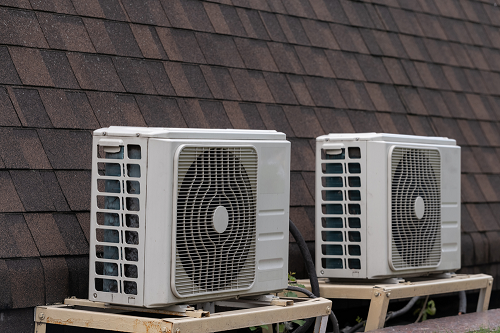
Request a Consultation
Please complete this form:
We serve Residential and Commercial customers in the following counties and cities
Sonoma County
- Cotati
- Healdsburg
- Petaluma
- Rohnert Park
- Santa Rosa
- Sebastopol
- Sonoma
- Windsor
Napa County
- American Canyon
- Calistoga
- Napa
- Oakville
- Rutherford
- St Helena
- Union
- Yountville
Marin County
- Novato
- San Rafael
